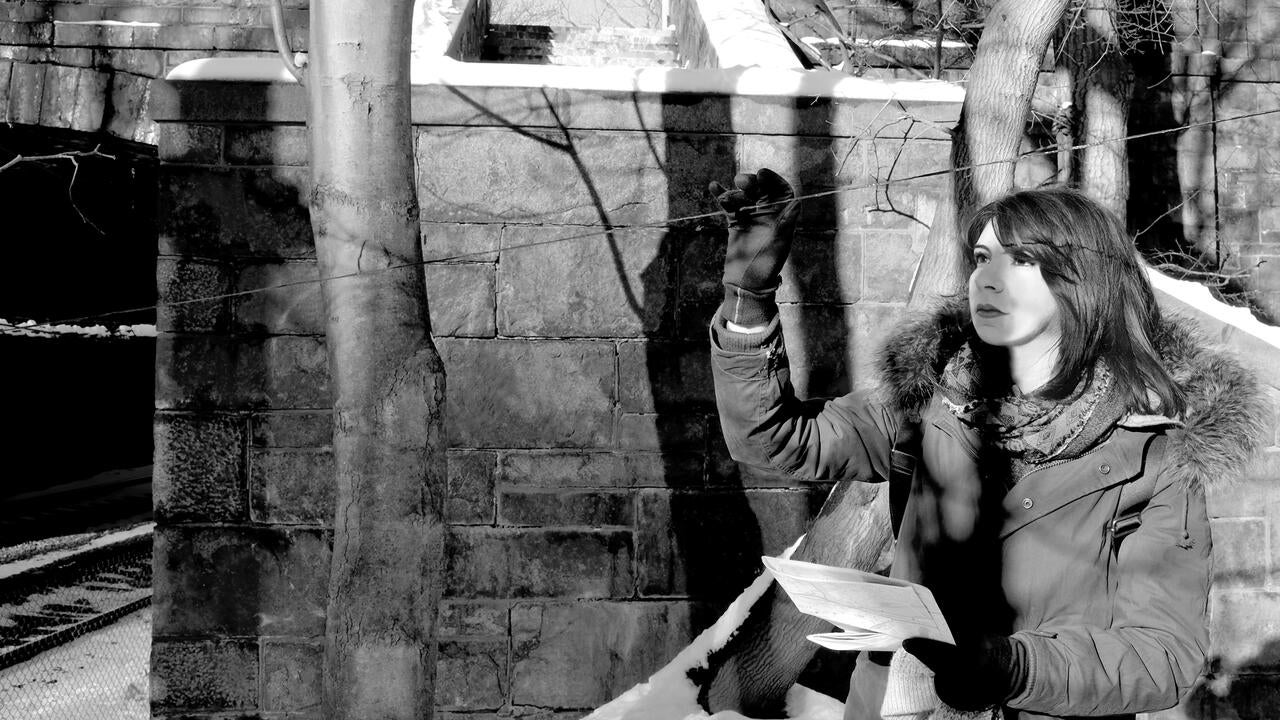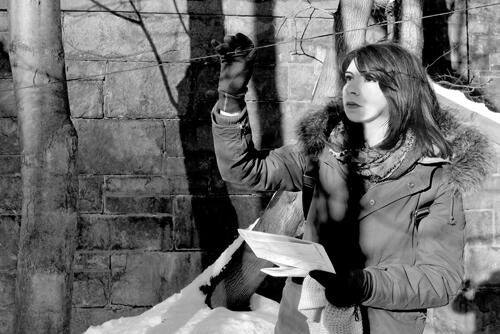
Architecture gold medal recipient unearths mysteries behind Jewish eruv
Piper Bernbaum will be honoured with a Governor General’s Gold Medal at spring convocation

Piper Bernbaum will be honoured with a Governor General’s Gold Medal at spring convocation
By Carol Truemner Faculty of Engineering With a father who is an architect and a mother who is a designer, it seems only fitting that Piper Bernbaum would follow a similar career path.
With a father who is an architect and a mother who is a designer, it seems only fitting that Piper Bernbaum would follow a similar career path.
And the School of Architecture graduate has done just that, while breaking new ground along the way with her award-winning thesis research into the spatial practice of the Jewish eruv, an area marked by wire that extends Orthodox Jewish households and the leniencies of private space into public areas. The symbolic boundary permits activities within it that are generally forbidden to take place in public on the Sabbath.
Bernbaum will be honoured with the Governor General’s Gold Medal for a master’s student at Spring Convocation on June 17. Gordon Pennycook, who graduated with a PhD in psychology last year, is the recipient of the prestigious medal at the doctoral level.
“Piper is unequivocally one of the best students I have had the pleasure to work with,” says Anne Bordeleau, director of the School of Architecture. “She will rise to any challenge that comes her way, achieving the highest understanding of all facets of the discipline of architecture as a humanistic practice, from its historical and technical footings to its cultural and socio-political reaches.”
The Governor General’s medal is just the latest award for Bernbaum. Earlier this year, she received a Royal Architecture Institute of Canada’s Student Medal for her thesis work and for the highest level of academic excellence in her graduating year. Additionally, she is the national recipient of the 2017 Prix de Rome for Emerging Practitioners from the Canada Council of the Arts.
The Prix de Rome award will allow her to travel across Canada and to Poland, Israel and the east coast of the United States to continue her thesis research into the eruv.
The idea for Bernbaum’s thesis came from her interest in what a border indicates in terms of architecture and community. She looked at basic typologies of boundaries that exist throughout urban space, and how walls start to inform the division between what’s inside and outside, and what’s included and excluded.
“I had never heard of the eruv. As an architect and secular Jew, it was a phenomenal mystery, both spatial and spiritual,” explains Bernbaum, who also earned her BArch at Waterloo. “It creates a multiplicity of the public sphere. We are within it and around it every day and yet unaware of its existence, sacredness and what it creates. It was a topic too tempting and too surreal to ignore.”
While working on her thesis, Bernbaum was part of the team that designed The Evidence Room for the 2016 Venice Architecture Biennale, the largest world-wide architectural exhibition. Led by Bordeleau and professors Robert Jan van Pelt and Donald McKay, the installation consists of all-white, full scale, haunting models of the architecture of Auschwitz, including a ladder leading to a gas-tight hatch, a steel gas column, gas door, and plaster casts of architectural drawings and evidence.
Bernbaum is currently the project manager of the expanded exhibition of The Evidence Room that opens June 25 for a seven-month run at the Royal Ontario Museum (ROM) in Toronto. The enhanced installation includes architectural models, new plaster casts, and a movie on the background of Auschwitz to provide context for school and tour groups.
Bernbaum graduated in October 2016, but wasn’t present to collect her degree. Now an adjunct professor for the School of Architecture, she was in Italy teaching for the school’s fall-semester Rome program for which she’ll instruct again beginning in September.
This Saturday, she’ll be on hand to receive one of the two Governor General’s medals, which are only awarded at Spring Convocation. The honour, the first for a Waterloo architecture student, means more to Bernbaum than a personal accomplishment.
“I love the School of Architecture because it has given me every opportunity possible,” she says. “More than anything, I’m proud to receive the medal and represent Waterloo Architecture because of all the support the school and faculty has given me throughout the years.”

Read more
Waterloo Engineering community honours impact and innovation at annual awards dinner

Read more
Meet five exceptional Waterloo graduate students crossing the convocation stage as Class of 2025 valedictorians

Read more
Twenty-six researchers receive federal funding to drive discovery, innovation and research infrastructure development
Read
Engineering stories
Visit
Waterloo Engineering home
Contact
Waterloo Engineering
The University of Waterloo acknowledges that much of our work takes place on the traditional territory of the Neutral, Anishinaabeg, and Haudenosaunee peoples. Our main campus is situated on the Haldimand Tract, the land granted to the Six Nations that includes six miles on each side of the Grand River. Our active work toward reconciliation takes place across our campuses through research, learning, teaching, and community building, and is co-ordinated within the Office of Indigenous Relations.